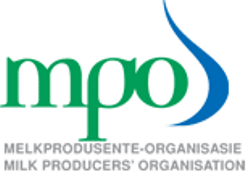
Agbiz weekly note on agricultural markets
- Most European and North American countries are generally regarded as food secure and hold a prominent place in the Global Food Security Index. This means these regions should be able to weather the COVID-19 pandemic with minimal concerns about food security. However, the growing challenge in the agricultural sector in countries like Germany, Italy, France, and the Netherlands, among others, is the shortage of farmworkers due to border closures aimed at containing the spread of the COVID-19 pandemic. This will have immediate and significant implications since this will limit the movement of many farmworkers from Eastern Europe. This challenge is not limited to Europe. Parts of the United States (US) agricultural sector also fear the shortage of labour, which is typically seasonal from Mexico.
- The US had already started raising concerns about farmworker shortages before the COVID-19 shock. And now faces the risk of not being able to access around 10% of crop farmworkers due to challenges in processing the so-called H-2A visa for temporary farmworkers coming from neighbouring countries. The pandemic will likely exacerbate the situation. Farmers across the US and Europe worry that crops may rot in the fields, and that could weigh on their finances.
- This challenge raises a broader question of whether the current labour shortages might precipitate increased automation in the sector post-COVID-19 as a measure to curtail such challenges in the future. Admittedly automation would not necessarily be an easier step across all the agricultural subsectors. Subsectors such as horticulture will likely remain labour-intensive, but where possible, technological diffusion will likely accelerate.
- There is no evidence of this effect as yet, but is an area that will be worth observing in the coming years. Such a transition would pose a challenge for policymakers in countries such as South Africa, which in its National Development Plan (NDP) expressed a desire to increase employment in agriculture and agro-processing sectors by roughly a million by 2030. This was underpinned by the need to increase the level of investment in the sector, agricultural productivity, expansion of export markets, promotion of labour-intensive agriculture subsectors, investment in irrigation, and an increase in the area farmed where possible.
- Since the publication of the NDP in 2012, there has been an increase in area farmed of commodities such as citrus, macadamias, apples, table grapes, avocados, and soybeans to levels or above levels assumed during the publication by 2018. What’s more, employment in primary agriculture grew from 718 000 in the last quarter of 2012 to 885 000 in the last quarter of 2019, a 23% increase in employment, according to data from Stats SA.
- The potential for expansion in productive farmland lies in the underutilised land in the former homelands and underperforming farms transferred under the land reform programme. The provinces containing former homelands that still have tracts of underutilised, arable land that can be prioritised for agricultural expansion are KwaZulu-Natal, the Eastern Cape, and Limpopo. These provinces collectively have between 1,6 million to 1,8 million hectares of underutilised land, according to a 2015 study by McKinsey Global Institute.
- Fortunately for South Africa, there has not been a scarcity of farmworkers since the COVID-19 pandemic started to intensify. On the contrary, South Africa is in the unique and challenging position of having a labour market characterised by a large number of unskilled and often unemployed workers. Agriculture is well placed to provide livelihoods to those struggling to enter the workforce and the entire food value chain has been classified as ‘essential’, which enabled activities to continue in this sector.
- While conditions in the domestic market seem largely unchanged, the current labour shortage challenge in Europe and the US might spark the increased automation post-COVID-19. With South Africa’s agricultural sector integrated into the global market, any changes in major agricultural producing countries will in the long run influence or be transferred to the domestic market. This means that when the times comes for post-COVID-19 recovery phrase, policymakers and industry will have to pay close attention to this aspect. Be that as it may, agriculture will remain an important industry to increase economic activity across rural South Africa.
WEEKLY HIGHLIGHTS
South Africa rice market
- Rice is one of the key staple foods that South Africa is dependent on imports (wheat is another one where 50% of what is consumed annually is imported). South Africa does not have a conducive climate for rice production and therefore the country imports all of its rice consumption. The International Grains Council estimate South Africa’s 2020 rice imports at 1,1 million tonnes, which is a 10% increase from the previous year. The imports are usually evenly spread across the year, which a slight peak in volumes in the last quarter of each year. About 70% of South Africa’s rice is usually imported from Thailand, with other notable suppliers being Thailand, India, Pakistan, China, and Vietnam. These are countries that South Africa will have to monitor closely during this COVID-19 pandemic as disruptions in agricultural trade there could impact South Africa’s rice market.
- Worth noting is that, on average, about 10% of the imported rice each year is re-exported to the neighbouring countries, namely Swaziland, Botswana, Zimbabwe, Lesotho, Namibia, and Zambia.
- Aside from the Southern African region, other countries that are notable importers of rice in the African continent are Benin, Côte d’Ivoire, Nigeria, and Senegal. These countries, along with South Africa, collectively account for 44% of Africa’s 2020 rice import forecast of 17,6 million tonnes, according to data from the International Grains Council.
- From a supply perspective, the global rice market is in relatively good shape. The 2019/2020 global rice production could reach 500 million tonnes, which is roughly unchanged from the previous season, according to data from the International Grains Council. The key contributing countries to the expected increase are India, Vietnam, Pakistan, Bangladesh, and the Philippines. The benefit of stable global rice production is reflected in prices which have softened in the recent weeks, after an upsurge in February when there were fears of larger crop losses in Thailand and parts of Vietnam. This is all beneficial to rice-importing countries such as South Africa. The only major disadvantage for local importers in the near term is the weaker domestic currency.
DATA RELEASES THIS WEEK
- These dates could change because of interruptions caused by COVID-19. We tentatively expect that on Wednesday, the South African Grain Information Service (SAGIS) will release the weekly grain producer deliveries data for the week of 03 April 2020. This covers both summer and winter crops. With summer grains still at growing stages, the focus remains on winter wheat data whose harvest was completed in January 2020. We will also monitor the early deliveries of oilseeds, mainly soybeans and sunflower seeds, whose harvest has recently started in a few regions of the country.
- In the week of 20 March 2020, about 2 717 tonnes of wheat were delivered to commercial silos. This placed total wheat deliveries at about 1,4 tonnes, which equates to 96% of the expected harvest in the 2019/2020 season. There are still very small volumes delivered thus far in the oilseeds (soybeans and sunflower seed), both still at levels below 20 000 tonnes.
- On Thursday, SAGIS will release the weekly grain trade data (wheat and maize), also for the week of 03 April 2020. In brief, maize exports for the 2019/2020 marketing year have thus far amounted to 1,3 million tonnes, which equates to 74% of the export forecast for this season.
- At the same time, we expect maize imports of about 545 000 tonnes, all yellow maize, mainly for the coastal provinces of the country. This is up from an estimated 171 622 tonnes in the 2018/2019 marketing year. The country has thus far imported 520 708 tonnes of yellow maize.
- In terms of wheat, South Africa’s 2019/2020 wheat imports could increase by 28% y/y to 1,8 million tonnes. In the week of 27 March 2020, South Africa’s 2019/2020 season amounted to 740 044 tonnes, which equates to 41% of the seasonal import forecast.
- Also, on Thursday, the US Department of Agriculture will release the World Agricultural Supply and Demand Estimates report for major grains and oilseeds.
Source agbiz.co.za
Author: Wandile Sihlobo
Download the SA Weekly Agricultural Market viewpoint here
Published on Monday, 6th April 2020 - 12:05
Recent Posts
disclaimer









